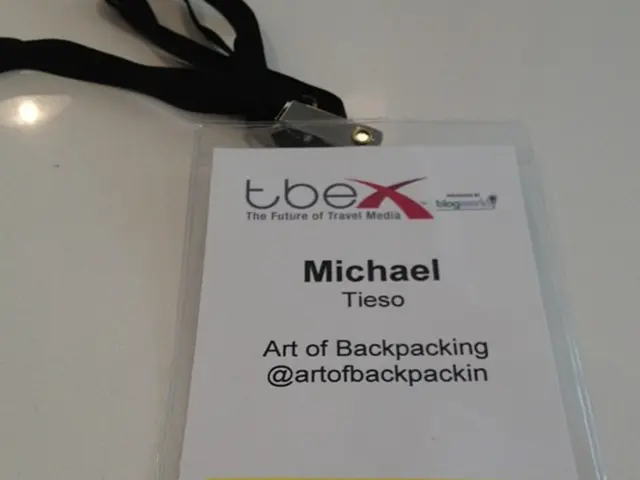Charity Organization Forced to Address Concealed AirTag in Donated Footwear
In a recent experiment, German influencer Moe.Haa, placed an Apple AirTag in a pair of sneakers and dropped them off in a metal collection bin for old clothes in Germany. The sneakers, tracked in real-time, made an unexpected journey, ending up in a second-hand clothing market in a small town in Bosnia-Herzegovina for 10 euros.
This discovery has raised questions about the final destinations of donated items and whether they are reaching people in need or being sold. The German Red Cross, which manages around 25,000 of the 120,000 collection bins in Germany, has responded to Moe's findings by explaining on TikTok that some donated clothes not suitable for direct donation are sold off to recycling or resale companies. Funds from the sales of these donated clothes, according to the German Red Cross, are funneled back into humanitarian efforts.
Similar experiments have been conducted before. Brandy Deason, in Houston, used a similar AirTag experiment to expose problems in plastic recycling. These types of experiments highlight the need for closer scrutiny of how donated items are managed, particularly in relation to environmental challenges and ethical practices.
Non-governmental organizations (NGOs) like the German Red Cross typically collect donated clothes through various donation drives or drop-off points, then sort and redistribute them to those in need either locally or internationally. However, there have been documented instances where donated items, such as sneakers, have ended up in secondhand resale markets instead of reaching the intended beneficiaries.
For example, a recent case involving a German blogger who donated sneakers to the Red Cross revealed that the shoes were tracked and later found for sale in Bosnia’s secondhand market, indicating that at least some donated clothes or shoes can be sold rather than directly redistributed to needy recipients.
The disposal and redistribution process in organizations like the German Red Cross often involves sorting donated clothes by usability and condition, direct distribution to recipients locally or via humanitarian aid programs internationally, collaboration with partner organizations for logistics and community needs assessment, and in some cases, selling surplus or unsorted goods in secondhand markets to fund further humanitarian activities or because some items do not meet quality standards for aid distribution.
While explicit official documents detailing the German Red Cross’s exact clothing redistribution procedures were not found in the search results, the tracked sneaker case provides concrete evidence of resale happening despite the general humanitarian aim.
The results of these experiments call for increased public awareness and engagement in tracking and understanding the fate of donated items. The findings from both Moe and Brandy's experiments emphasize the importance of transparency and accountability in the management of donated items. This incident raises important issues for non-governmental organizations, potentially damaging their public image due to a lack of transparency in the donation process.
- In light of recent experiments like Moe.Haa's tracking of an AirTag in a pair of sneakers, there is a growing concern about the final destination of donated items and whether they are reaching those in need or being sold for profit.
- Social-media platforms like TikTok are being used by organizations such as the German Red Cross to address the questions raised by these experiments, clarifying that some donated clothes not suitable for direct donation are indeed sold off to recycling or resale companies, with funds from the sales supporting general-news humanitarian efforts.
- The findings from experiments involving branded items like sneakers, such as Brandy Deason's AirTag experiment in Houston, draw attention to the need for transparency and accountability in how donated items are managed, particularly in relation to crime-and-justice issues and ensuring ethical practices in technology-driven commerce.




